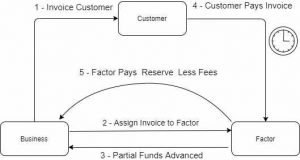Profit is vanity Assets are Sanity but Cash is king! I am not too sure who came up with that phrase but whoever did is spot on. I have previously written about the problem of profit and have seen first hand how a profitable business almost went under due to a cash flow issue. Understanding the issues related to managing ‘by profit’ is important as are understanding the benefits. One of the key benefits of Profit and Loss statements are understanding the business expenses. As we head in to 2015 my question to you is: “If you have more than 1 customer, do you know which customer (or customer channel) incurs more of your costs, and if so, are you adjusting your pricing or cost allocation method to account for the differences?” Put another way, do you know your Cost To Serve? In the retail / wholesale sector you will often find department stores with a very high cost to serve. In other words, wholesalers who distribute through the retailers will need to provide the retailer with a high first margin, rebates, marketing funds and potential markdown contribution. These costs potentially erode the wholesalers ability to fund future growth. Passing these costs on to the consumer is difficult as the retailer will want to manage their price points and in a competitive market may not want to pass on wholesaler costs to the consumer. Hence the wholesaler is in the difficult position of managing its ability to generate profit through careful expense management. However these wholesalers typically distribute through a number of retailers. A cost allocation P&L will allow the business to see which retailer has a higher cost to serve. By understanding the cost to serve the business is able to allocate resources in a manner that generate the most profitable outcome. Imagine the following scenario: Customer A generates -2% profit / $ 10 mil revenue Customer B generates 4% profit / $ 3 mil revenue Customer C generates 15% profit / $ 1 mil revenue or alternatively Product A generates -2% profit / $ 10 mil revenue Product B generates 4% profit / $ 3 mil revenue Product C generates 15% profit / $ 1 mil revenue Knowing this would force you to ask questions such as: a) How do we make the the $ 10 mil revenue profitable? i.e. Is it possible to increase the gross margin, what costs can be reduced etc? b) How do we grow the $ 1 mil opportunity? etc etc Obviously this is much easier said (or written) than done but ultimately this is what good businesses do everyday. So back to my question. I’ll put it another way. Even if your biggest customer will be expensive to manage in 2015 (the customer has a high cost to serve) will they be more or less profitable for you?
Business & Finance Articles on Business 2 Community
(234)



